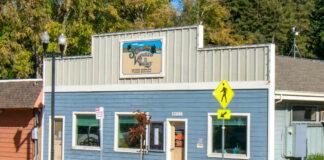Scotts Valley wants a new middle school, and property owners are being asked to pay for it with a ballot measure in June.
I have a son attending the middle school now, but he’ll be long gone by the time the proposed new campus would be built.
For voters whose kids would attend the new middle school, the decision whether to build it is a no-brainer. If you can vote to have everyone chip in to improve the education of your child, why not?
But there’s another way for me to look at it. My wife and I own a home in Scotts Valley and we like to see its value go up. Will the plan be a benefit to local property owners, including those who won’t have kids attending the new school?
That’s the question I will explore in my next two columns. This month I’ll talk numbers and next month publish some local opinions — sort of a digital and analog view of the issue.
To review, Scotts Valley voters will decide June 3 whether to let the district borrow $35 million to improve facilities, including building the new middle school.
If the bond measure is approved by 55 percent of voters, property owners will pay an extra $57 per $100,000 of assessed value every year until the loan is paid off in about 25 years.
Assessed value is not the same as market value. Homeowners who bought many years ago at lower prices will have assessed values that are lower than current market values.
For example, the owner of a home that Santa Cruz County assesses at $400,000 will be billed 4 times $57, or about $228, on his or her annual property tax bill.
Over 25 years, that’s $228 times 25, which is $5,700. That homeowner will have paid $5,700.
Scotts Valley has a reputation for great schools. And homes in Scotts Valley sell at a premium to homes in communities that have less great schools.
The question that comes to mind is: Will the planned improvements cause property values to rise at least $5,700 more than they would have if the improvements weren’t made?
But that isn’t a fair question. The homeowner isn’t being asked to pay $5,700 today; he’s being asked to pay $228 a year, and the value of future $228 payments is likely to be worth much less than the value of $228 today, for two closely related reasons:
n Inflation: I expect the cost of living to rise over the next 25 years, so $228 in the future won’t buy what it does today.
n Time value of money: Since most of the $228 payments will be made way out in the future, the homeowner has many years to invest his or her money to make it worth more than $228 today.
Let’s assume that those future $228 payments are invested, and those investments produce an average annual return of 4.25 percent. A well-selected investment portfolio should do much better than that, but let’s make a conservative assumption of 4.25 percent.
There are numerous calculators online that will estimate the present value of a 25-year stream of tax payments, including the one at the bottom left of this site: www.uic.edu/classes/actg/actg500/pfvatutor.htm
They show that annual investments of $228 for 25 years that earn 4.25 percent a year are worth $3,470 in today’s dollars.
So, the fair question is: Will the homeowner’s property value go up at least $3,470 more than it would have because of the planned school improvements? I don’t know of a calculator that can tell me that, so next month I’ll ask some realty pro’s for their opinions.
– Mark Rosenberg is a financial adviser with Financial West Group in Scotts Valley, a member of FINRA and SIPC. He can be reached at 831-439-9910 or mr********@*wg.com.












